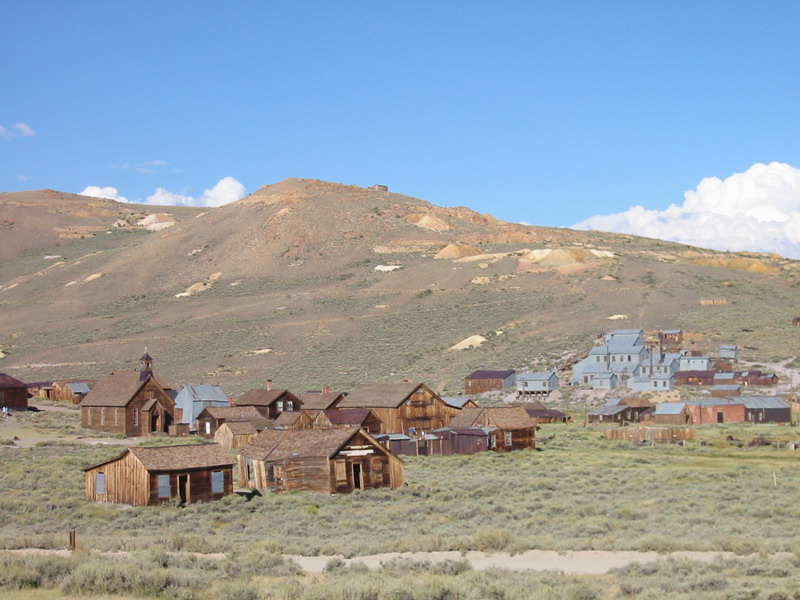|
Few places genuinely breathe history. Too often, historic sites have
been scrubbed up, sanitized and re-created in an attempt to capture
moods of its past.
Not Bodie.
Bodie State Historical Park, located in the Sierra Nevadas just west
of the California-Nevada border, is an intriguing, beguiling excursion
into the past. When it became part of the California State Parks system
in 1962 as a historic park, it was decided that its skeleton of structures
would be maintained in a state of "arrested decay."
More than 170 buildings, only about 5 to 10 percent of those remaining
from Bodie's glory years as an 1880s gold mining boom town, remain.
Still, their "real" feeling gives a sense of what was. For
several decades in the late 1800s and early 1900s, Bodie was was a
town of more than 10,000 people. It was notorious for its killings,
opium dens, brutally rough living and working conditions, miserable
high desert weather and remoteness.
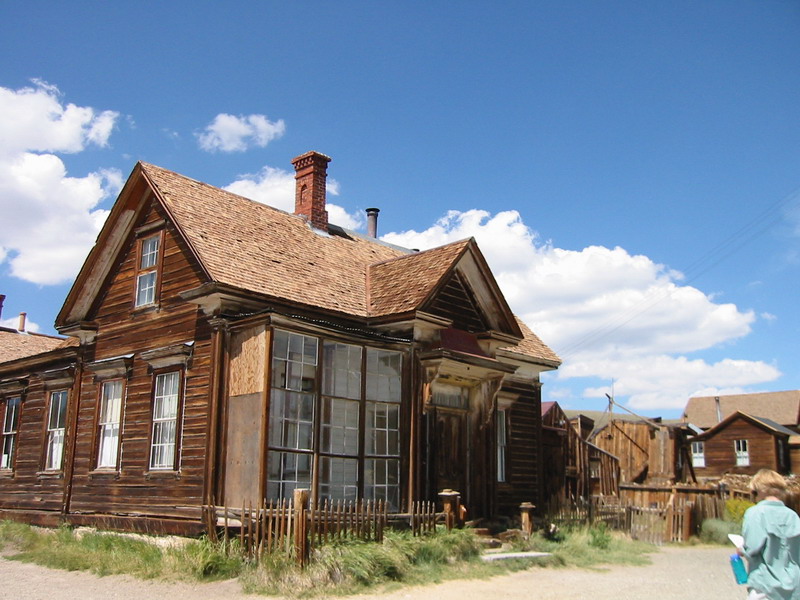 |
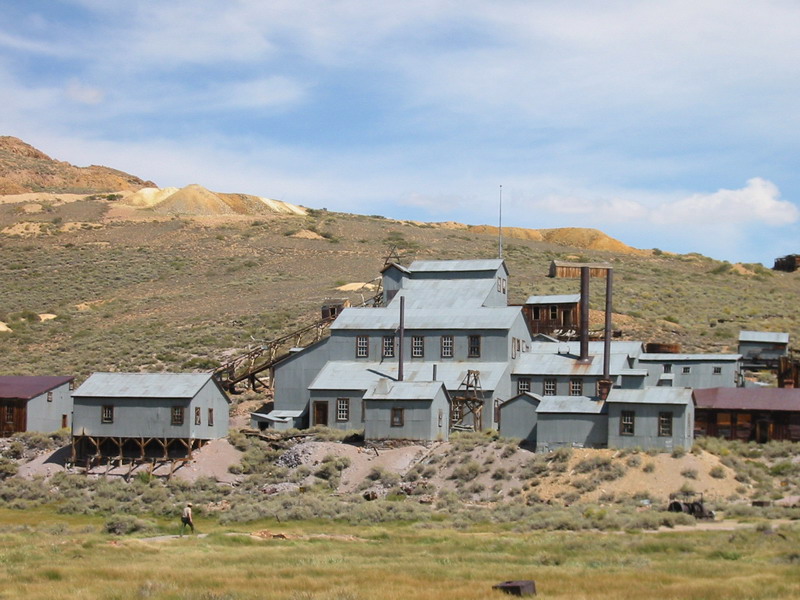 |
 |
|
Once
elegant, now braced against the wind.
|
A
gold mine: production halted years ago.
|
A
home, time-turned by the desert into a shack.
|
It's said that one little girl, on learning her family was moving
there, wrote in her diary, "Goodbye God, I'm going to Bodie."
These days, going to Bodie is a pleasure. It begins on State Route
270, with a 13-mile road that winds and climbs from Highway 395 seven
miles south of Bridgeport, California. The last three miles are unpaved,
which helps create a sense of its ruggedness. Smartly, vehicle parking
is restricted to an area away from the town's remaining structures.
Be prepared to do some walking.
Streets that once bustled with miners, merchants and all types of
hustlers are seasonally populated with tourists. More than 200,000
people visit yearly. The park is open year-round, from 8 a.m. to 7
p.m. in the summer and 8 a.m. to 4 p.m. other seasons.
Bodie was founded by Waterman S. Body, also known as William S. Bodey,
in 1859. Body discovered small amounts of gold in the hills north
of Mono Lake. There's some debate on the spelling of the town. Some
claim it was a mistake by an illiterate sign painter, others say it
was done to ensure its proper pronunciation. Body or Bodie, ironically,
never enjoyed the rewards of his discovery because he froze to death
while carrying in winter supplies.
When the Standard Company found a rich strike of gold and silver ore
in 1877, the sleepy town of 20 exploded into a boom town. At its peak,
the town had more than 60 saloons and dance halls, and killings were
a near daily occurrence. Bodie became legendary as the "most
lawless, wildest and toughest mining camp the far west has ever known."
While Bodie was known for its riches over the years (ore mined in
the hills near Bodie totaled more than $32 million in gold and more
than $6 million in silver) it required businesses to support the workers.
Wood to power the mills and warm houses was provided by Chinese "mule
loads" until the Bodie-Benton Railroad transported lumber and
firewood. General stores and saloons provided supplies and outlets
for free time away from the mines, and the women on Bonanza Street
were legendary for their hospitality.
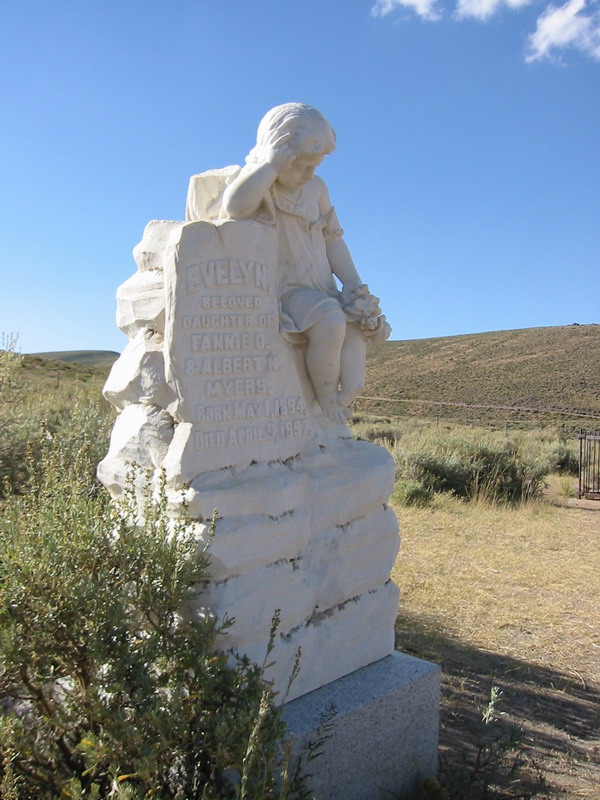 |
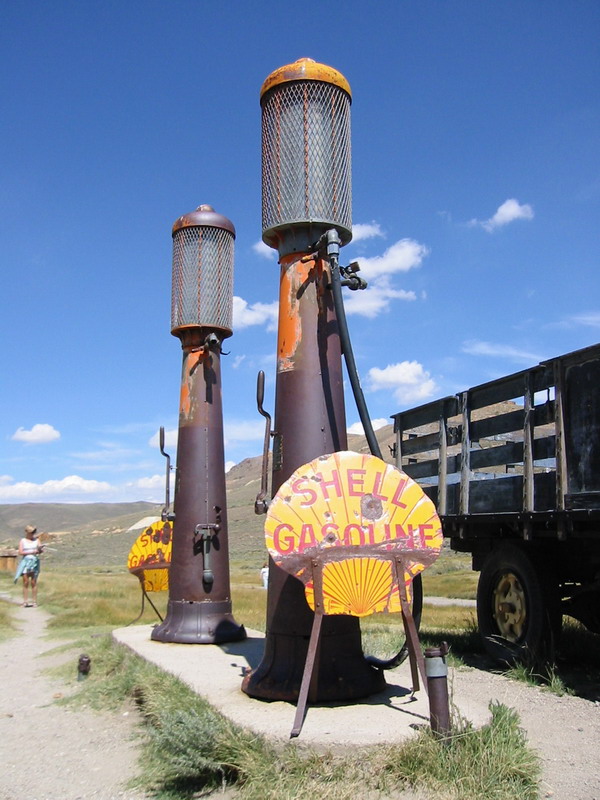 |
Bodie's decline began in the 1880s, when the mines
played out and businesses transferred to newly booming cities.
Many homes were toasted during a fire in 1892. Although the use
of electrical power to run the mill and the development of the
cyanide process for working mill tailing aroused interest, efforts
to revive the town were short-lived. In 1932, a child playing
with matches lighted the fire that destroyed most of the declining
town's buildings. |
|
Tombstone
Marks Time
|
Mileage
Didn't Matter
|
|
Although only fragments of the town remain, there's
much to see. A friend and I spent several hours peering in windows
of vacant buildings and houses. While fires and old age claimed much
of Bodie and its mills, what remains lends testimony to the town that
was.
An informative park guide provides directions and, even better, fascinating
background material. Using the guide, we strolled past decayed homes,
machine shops, a church, Chinatown, jail, sawmill, livery stable,
school, bank, assay office, saloon, firehouse, gas station, mercantiles
and a morgue with caskets still inside.
The former Miner's Union Hall, built in 1878, which served as the
focus of the town's social life, is now a low-key museum.
A short walk from downtown are four adjacent cemeteries, the final
resting places for many of Bodie's old-timers, from business leaders
to murderers to prostitutes to forgotten others. Some are ensconced
under beautifully carved graves surrounded by lavish fences, others
in unmarked sites shrouded by sagebrush and weeds.
Bodie is a place inhabited by ghosts of the past.
* * *
For information about Bodie visit the California State Parks Web site
at www.parks.ca.gov; contact Bodie State Historic Park, P.O. Box 515,
Bridgeport, CA 93517, telephone (760) 647-6445; or The Friends of
Bodie, P.O. Box 515, Bridgeport, CA 93517. Go prepared as there are
no services, camping, lodging, food vending or stores. A bathroom
and museum are open during the summer. At an elevation of 8,400 feet,
it is hot in the summer, very cold during the winter.
Photos by Lee
Juillerat
|
